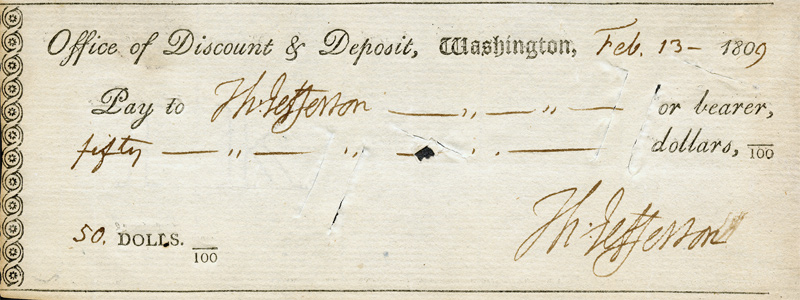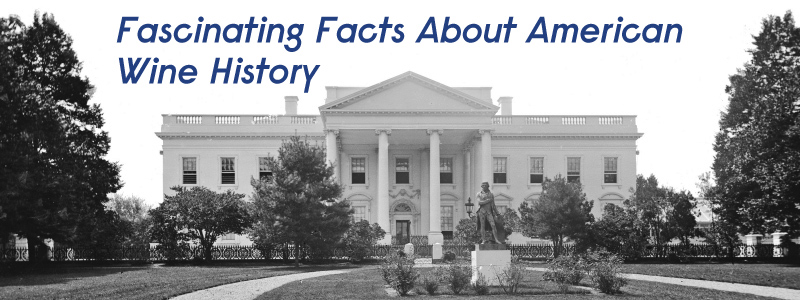Today is Presidents Day, so in honor of the holiday we dug up eight of the most interesting facts we could find about wine in early American history. Presidents Day generally celebrates the February birthdays of Presidents George Washington and Abraham Lincoln; however, a few states like to put their own spin on the holiday, including the great state of Alabama — the childhood home of one of our co-founders — where Thomas Jefferson is swapped in for Lincoln, for obvious historical reasons. The mere mention of Thomas Jefferson’s name was enough to get us thinking about wine. If Jefferson doesn’t make you think of wine, read the list below to find out why he should.
President Washington & His Madeira

President Washington, the man the holiday was originally meant to honor, actually distilled his own whiskey. When it came to wine, he drank Madeira, often three to five glasses a night after dinner. Madeira, a fortified Portuguese wine, was popular during the Colonial era due to the fact that it could hold up through long ocean voyages and the lack of modern luxuries like air conditioning.
Toasting The Declaration Of Independence

Speaking of Madeira, the signing of the Declaration Of Independence was toasted with glasses of the stuff. Whether that happened on July 4th, 1776 or a few days later is a touchy subject!
Honest Abe’s Liquor Shop

What about Honest Abe, the man who (most of) the country honors on Presidents Day? President Lincoln held an actual liquor license back in his days in Salem, Illinois. For a modest $7 dollars, in 1833, he and his partner William F. Berry got a tavern license that permitted them to sell a “1/2 pint of wine or French brandy for $.25,” as well as a “1/2 pint of rum, peach brandy, or Holland gin for $.1875.” Talk about inflation! You could say that Lincoln had alcohol in his blood…or water. While growing up in Kentucky, his family lived along Knob Creek (now the name of a popular Bourbon brand), and his father worked at a nearby distillery. Despite these tight connections to the booze business, Lincoln himself wasn’t much of a drinker, as he found that whiskey left him feeling “flabby and undone.”
The 1st American Wine Served At A White House State Dinner

Recently President Obama caused a stir in the wine world by serving up ‘cheap’ American wine to French President François Hollande at a State Dinner. Politics! But did you know that the White House first served an American wine well over a century ago? All the way back in 1861, President Abraham Lincoln’s wife Mary Todd put local wines on the menu at a State Dinner. One of these wines is mentioned by name – Norton, a grape indigenous to North America grown by Missouri winemakers who were German immigrants.
Thomas Jefferson’s Annual Wine Bill

President Thomas Jefferson’s birthday is actually in April, but, as we mentioned, in Alabama, he’s one of the two men being honored on Presidents Day. Which is fine by us — as Jefferson might as well be patient zero when it comes to advocating for the consumption and production of wine in the US. While posted in France on diplomatic duties in the 1780s he drank a lot of wine, and ordered even more to be sent back to the US (roughly 400 bottles per year – some shipped by barrel), many from Bordeaux. He upped the ante to 600 bottles per year while living in the White House. Given that level of consumption it’s no surprise he left the White House having racked up a wine bill of around $10,000 dollars (non-inflation adjusted).
Thomas Jefferson’s 3 Month Horseback Ride Through Southern France

Here at VinePair we have a Chief Wine Geek, and we all love wine. In fact, one of us is headed to Bordeaux in June. Our imbibing qualifications aside, we think it’s fair to say that Thomas Jefferson has got the upper hand on all of us. In 1787, Jefferson took a three-month vacation from his diplomatic duties in Paris. Travelling anonymously on horseback, mostly solo, he explored the regions of Champagne, Burgundy, Beaujolais, Languedoc and Bordeaux, among other areas, also taking a dip into Northern Italy to check out the olives. He took extremely detailed notes on the trip (call it half wine-geekery/half agricultural-espionage), and in fact, you can jealously review his entire itinerary here.
The First Advocate For American Wines Is Vindicated

President Jefferson strongly believed that America could and should produce its own wines. His initial attempts to grow European grapes (vitis vinifera) at his plantation in Monticello ended in failure, but ultimately his thesis proved accurate. Today the American wine industry is one of the world’s largest; without Jefferson’s relentless early encouragement who’s to say if we’d have accomplished all we have. So, we’re pretty sure if he could have time-travelled to 1976’s Judgment of Paris he would have been the happiest man in the room. At the blind tasting, the best wines America had to offer beat out France’s best wines and shocked the wine world.
America’s First ‘Great’ Wine, Produced In ‘The Cradle Of Presidents’

Did you know that seven (or eight – it’s complicated) American Presidents hail from Ohio? That’s reason enough to talk about America’s first great wine, a pink sparkling libation made in the 1840s from a hybrid grape called Catawba, which was grown in the Ohio River Valley outside of Cincinnati. The wine was so impressive that Charles Mackay of The Illustrated London News, said it outshone the sparkling wines of Champagne. But, the most famous praise of all came from Henry Wadsworth Longfellow, who wrote an entire poem dedicated to the wine.

